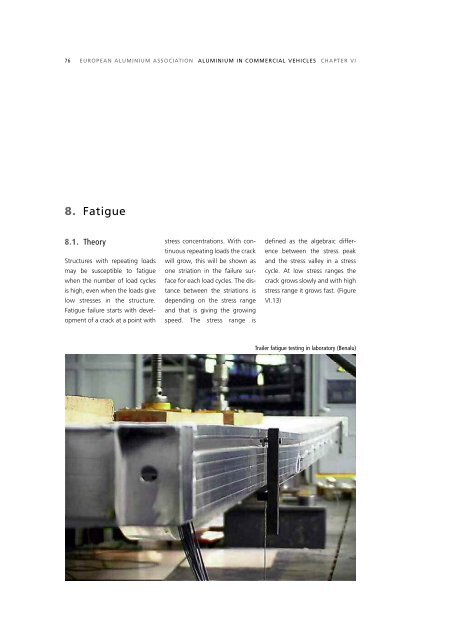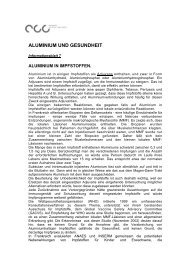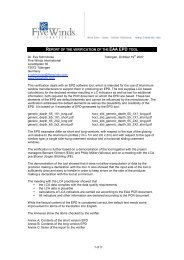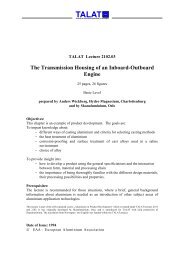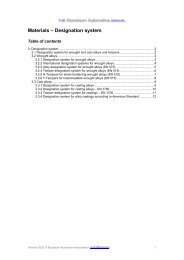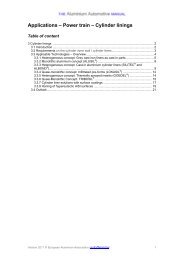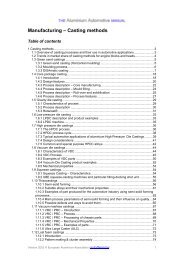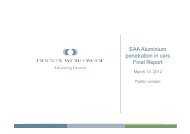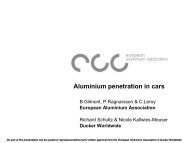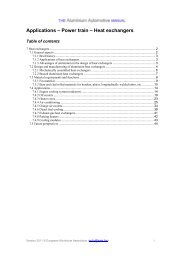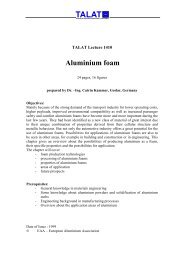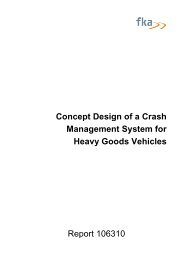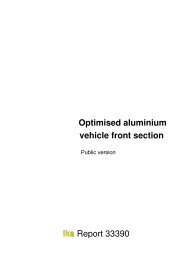aluminium in commercial vehicles - European Aluminium Association
aluminium in commercial vehicles - European Aluminium Association
aluminium in commercial vehicles - European Aluminium Association
You also want an ePaper? Increase the reach of your titles
YUMPU automatically turns print PDFs into web optimized ePapers that Google loves.
76 EUROPEAN ALUMINIUM ASSOCIATION ALUMINIUM IN COMMERCIAL VEHICLES CHAPTER VI<br />
8. Fatigue<br />
8.1. Theory<br />
Structures with repeat<strong>in</strong>g loads<br />
may be susceptible to fatigue<br />
when the number of load cycles<br />
is high, even when the loads give<br />
low stresses <strong>in</strong> the structure.<br />
Fatigue failure starts with development<br />
of a crack at a po<strong>in</strong>t with<br />
stress concentrations. With cont<strong>in</strong>uous<br />
repeat<strong>in</strong>g loads the crack<br />
will grow, this will be shown as<br />
one striation <strong>in</strong> the failure surface<br />
for each load cycles. The distance<br />
between the striations is<br />
depend<strong>in</strong>g on the stress range<br />
and that is giv<strong>in</strong>g the grow<strong>in</strong>g<br />
speed. The stress range is<br />
def<strong>in</strong>ed as the algebraic difference<br />
between the stress peak<br />
and the stress valley <strong>in</strong> a stress<br />
cycle. At low stress ranges the<br />
crack grows slowly and with high<br />
stress range it grows fast. (Figure<br />
VI.13)<br />
Trailer fatigue test<strong>in</strong>g <strong>in</strong> laboratory (Benalu)


